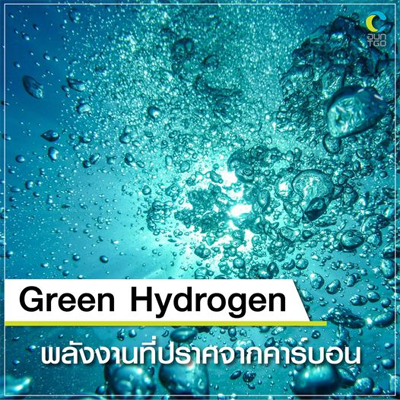Green hydrogen, an alternative fuel generated with clean energy
What is Green Hydrogen?
Green hydrogen is a clean burning fuel that eliminates emissions by using renewable energy to electrolyse water, separating the hydrogen atom within it from its molecular twin oxygen.
How Is It Made
The process of electrolysis has to happen. This process requires water, a big electrolyzer and plentiful supplies of electricity. if this electricity comes from renewable sources, then the hydrogen is green; the only carbon emissions are those from the generation infrastructure.
However, not much green hydrogen is currently being produced; it currently accounts for less than 1of annual hydrogen production, according to Wood Mackenzie.
A challenge lies in the relatively small supply of electrolyzers and compared to more established production processes, electrolysis is very expensive, so the market for electrolyzers is small.
How Do You Use It
Green hydrogen can be added to natural gas and burnt in thermal power or district heating plants. It can be used to replace the industrial hydrogen that gets made every year from natural gas.
However, storing and transporting green hydrogen is difficult; the highly flammable gas occupies a lot of space and can make steel pipes brittle. Because of this, specialised pipelines must be built, which is costly, pressurising the gas or cooling it to a liquid. These last two processes are energy-intensive and undermine green hydrogen’s round-trip efficiency.
How Expensive Is It?
The International Energy Agency put the cost of green hydrogen at USD$3 to $7.50 per kg, compared to $0.90 to $3.20 for production using steam methane reformation.
The cost of electrolyzers must be cut to reduce the price of green hydrogen, but this will take time and scale. However, the IEA says that electrolyzer costs could fall by half by 2040, from around $840 per kilowatt of capacity today.
Another problem is that green hydrogen requires very large amounts of cheap renewable energy because some is lost in the process of electrolysis. Shellsays that electrolyzer efficiencies range from around 60-80%.
It is likely that developers, like Lightsource BP and Shell, will build green hydrogen production plants with dedicated renewable energy generation assets in high-resource locations.
Issues
Although a consensus has been reached that the world cannot be fully decarbonised in the long term without green hydrogen producing the quantities of green hydrogen that the world will need would require a massive amount of renewable energy as well.
According to the International Renewable Energy Agency (Irena), the world will need 19 exajoules of green hydrogen in the energy system in 2050- between 133.8 million and 158.3 million tons a year.
Annual growth rates of wind and solar are increasing, however it is nowhere near enough for the world to be in line with the Paris Agreement goals. “The share of renewables in the worlds’ total final energy consumption has to increase six times faster to meet agreed climate goals,” Irena wrote in a report last year.
With this, many argue, particularly within the oil and gas sector, that meeting ever- increasing energy demands with solely electricity is not going to be possible
The current argument for clean hydrogen is that the bulk of the required volume of energy will have to be produced by natural gas and CCUs, also known as blue hydrogen.
Several oil majors are struggling for pole position in green hydrogen development. For example, Shell Netherland confirmed in May that it had joined forces with energy company Eneco to bid for capacity in the latest Dutch offshore wind tender to create an enormous hydrogen cluster in the Netherlands. BP’s solar developer Lightsource also revealed that it plans to develop an Australian clean hydrogen plant powered by 1.5 gigawatts of wind and solar capacity.
Reference https://bit.ly/3fT0TH4




